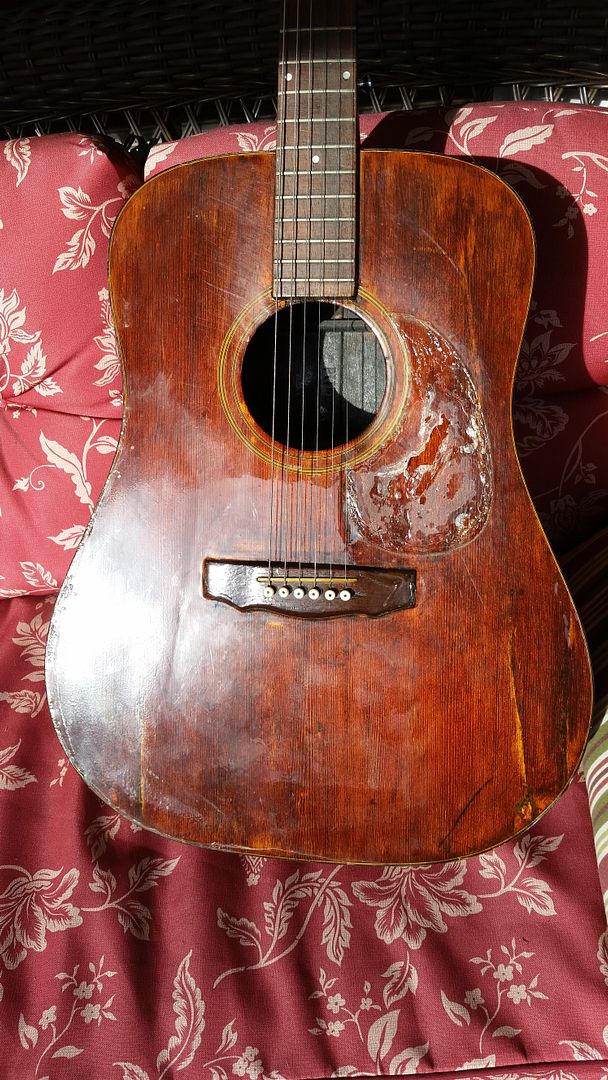Neal
Senior Member
Having a collectible guitar you don't play is like having a collectible car that you don't drive.
Having a collectible guitar you don't play is like having a collectible car that you don't drive.
No such thing, the White Falcon is a Gretsch model. Also, 21K seems really high for a white falcon in the late 90's.A friend of mine found a Gibson White Falcon in the trash one day on his way to work sometime in the '80s. In its orginal case.
Original finish is important to me.
I laughed out loud.I chuckled when I read your reply, Neal.


This pretty much tells the story for me. I enjoy both new & vintage instruments equally, based on playability first (I've got to want to have it in hand - otherwise, what's the point?), then tone, and then aesthetics. I try to maintain originality with all of them to the greatest extent possible, but structural integrity sometimes wins out & a modification must be made.But here's the kicker. There was a 2020 Gibson Hummingbird Vintage that was amazing too. The guys at the shop pulled it out shortly after I got there and said you've got to hear this, while I was playing the 1965 J-50. It was actually was a little more resonant? All the notes just seemed a little crisper, and although it didn't have quite the depth of the J-50, but it really wasn't that far off. That was about $4250...I think. Who knows if all the "new vintage" Gibson's are that good, but that guitar was impressive.
I laughed out loud.
Who could blame him after Gloppy?:

NGD: Gloppy, the Totally Abused D-35
So, for those of you that frequent the forum, you may recall an eBay listing a few weeks ago for a '81 D-35 that was so totally whipped that it begged for redemption and salvation. Covered in a gloppy, sprayed-on finish that was heavily and amateurishly applied, so that it encased the guitar in...letstalkguild.com


 frontporchcville.org
frontporchcville.org
I am admittedly a "vinnidge guitar snob" so almost all of my instruments are pre-1970. That said, my last name is not Rockefeller and have worked most of my life as a professional musician, so I am not buying "mint" examples. Originality is more important than cosmetic condition to me. I do not mind a totally beat finish, even chunks missing (headstock corners, etc), and certainly not heavy play wear. But of paramount importance to me is that parts have not been changed or especially "upgraded". I will not purchase a guitar that has had Grovers or similar big, clunky "modern" tuners installed, pickups changed, nickel plated hardware replaced with chrome. I am going to drag these things to gigs and play them, but I want them to retain the elements that would have appealed to me if I purchased them when they were new. Here's a good example...Ugly as hell, but all original parts present and accounted for...
I prefer 100% original, down to the nut, saddle, and endpin if possible.
Changes I'm comfortable with are nut, saddle, endpin- these are often changed, so very tough to find original. Changes I tolerate are reversible aftermarket electronics, minor repairs here are there (bracing, patches, etc.), tuners, pickguard. Where things start get dicey for me are irreversible changes like bridge replacement, bridge plate, and beyond. I might still buy a guitar with these kinds of changes, if they were done with respect to the original, but it would factor into how much I would pay. I would prefer a cracked + glued original bridge than a new one, for instance- most don't share my opinion on this.
Any replacement of key parts of the guitar itself, I would pass- regardless of the deal. Like if the top was replaced, it's a new guitar IMO. I would not be interested in a vintage guitar w/ replaced fretboard, etc. either.
Part of what makes a vintage guitar appealing to me is the "time machine" aspect - as in, you are experiencing playing an instrument that existed in another time and place. For every small change that is made, that is impacted in small increments, but these add up.
I am already forced to accept non-vintage strings!
The pictured "ugly" guitar? '47-'48 ES-300. I do not believe it ever saw the interior of a case until I got it. I should add to the above that I am kind of a nut concerning original cases as being a portion of "all original parts intact" with vintage guitar purchases. I knew where to find an appropriate late 1940s case for this one so I overlooked this criteria. Pickguard had long ago disintegrated; I fabricated a replica after I got the guitar.Late ‘40’s/early ‘50’s Gibson ES-175?
This is going to be a fun hunt! Today I'm less worried about the brand and just more focused on finding an amazing tone.